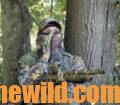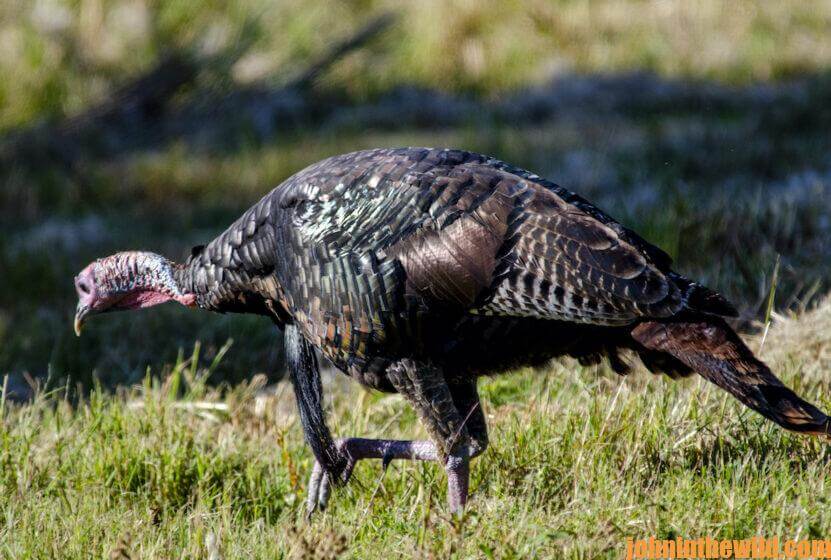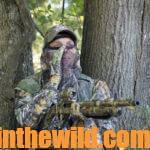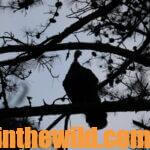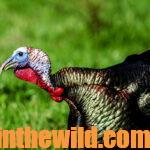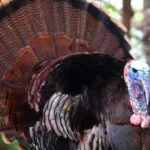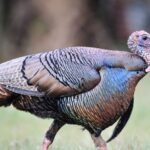Editor’s Note: After the early days of hunting turkeys in the 1970s, listening to audio tapes on a cassette recorder was the way most turkey hunters learned how to call wild turkeys. One of the main reasons was due to cassette tape recorders being portable. Many cars then had cassette tape players in their dashboards. However, audio devices have improved so much since then that now with an audio book like my Audible “Outdoor Life’s Complete Turkey Hunting,” available at https://www.amazon.com/gp/product/B09Z5JHY42/ref=dbs_a_def_rwt_hsch_vapi_taud_p3_i4,
you can learn to call wild turkeys on your cell phone, your computer or your tablet. I believe that hearing an expert call wild turkeys and then imitating the sounds he makes is still one of the best ways to learn to call wild turkeys. Lovett Williams is a renowned turkey biologist and considered an expert on calling turkeys.
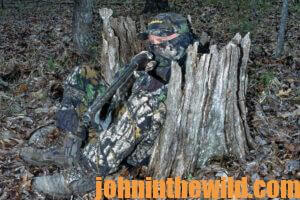 John E. Phillips: Another call that turkeys give is a cluck. Lovett, why do turkeys cluck, what does it mean, and when do they use it?
John E. Phillips: Another call that turkeys give is a cluck. Lovett, why do turkeys cluck, what does it mean, and when do they use it?
Lovett Williams: There are several types of clucks. What I call a plain cluck, which is a series of widely-separated notes, is used by a turkey he when she’s trying to reassemble the flock. A gobbler will use a cluck when he arrives at a location, hears a hen calling and sees her. This type of cluck says, “Okay, I hear you calling. I’m here. Where are you?” The hunter may want to use the plain cluck call when there’s a gobbler close to get the gobbler to reveal his position. The gobbler also will cluck to try to get the hen to reveal her position. But when a hen clucks, she is saying “I’m right here. Where are you?” Often the gobbler will come closer to where the hen is, and the hunter will take him. When a gobbler comes in really close to where he expects to meet his hen, he is “all eyes.” So, if you give a cluck, you need to be well hidden and not move. Often when a young gobbler clucks, his cluck will sound like a hen’s cluck.
 Phillips: Another sound that we hear from a turkey and a sound that a turkey hunter needs to learn is how to use the hen yelp. Lovett, tell us what the hen yelp means.
Phillips: Another sound that we hear from a turkey and a sound that a turkey hunter needs to learn is how to use the hen yelp. Lovett, tell us what the hen yelp means.
Williams: There also are several types of yelps, but the one I want to introduce first is what I call the plain yelp. Some hunters believe that the plain yelp is the love call of a hen turkey. It is often used by spring turkey hunters to call a gobbler to within gun range. The plain yelp is a multi-repetitious series of yelps from 3-4 yelps to 7-8 yelps. This call is what the hen uses to call in a gobbler or learn the tom’s location. When a nearby turkey is close, the plain yelp is one of the two most-important calls for a turkey hunter to learn to use.
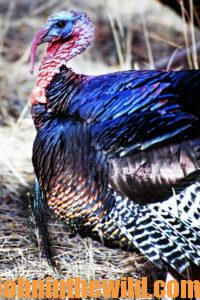 Phillips: Another call that’s often heard in turkey calling contests and that many hunters use in the woods is the purr. Lovett, give us an explanation of the purr, and tell us when a hen/turkey gives this call.
Phillips: Another call that’s often heard in turkey calling contests and that many hunters use in the woods is the purr. Lovett, give us an explanation of the purr, and tell us when a hen/turkey gives this call.
Williams: A purr has a wide spectrum of volumes from very soft and contented sounds to loud. It sounds somewhat like a cat purring all the way up to an extremely-loud purring that’s called a fighting rattle or a fighting purr when turkeys are angry. The fighting rattle purr is given when a turkey is very angry. Most hunters use the soft purr or intermediate purr of a contented hen when the gobbler is really close to get him to come in to her. In the spring, if the turkey is close enough to hear but for some reason doesn’t move close enough for the hunter to take a shot, hen turkeys in the spring often will use this intermediate purr as they walk through the woods feeding.
John E. Phillips: No matter how well you’ve mastered calling turkeys, if a gobbler can’t hear you, he still won’t come in to where you are. This next call is one that hunters use to reach out and touch old longbeards.
 Williams: Cutting is used by gobblers when they want to be heard from a great distance. Hunters use this call often when the turkey is far away from them because this call carries a long way and is a repetitious, staccato sound. Another term for cutting that better describes the call is fast clucking. A hunter will use this call from adult hens in the spring of the year because it will solicit a gobble from a male turkey. A gobbler generally will come in to a hunter who uses this call from a long distance away.
Williams: Cutting is used by gobblers when they want to be heard from a great distance. Hunters use this call often when the turkey is far away from them because this call carries a long way and is a repetitious, staccato sound. Another term for cutting that better describes the call is fast clucking. A hunter will use this call from adult hens in the spring of the year because it will solicit a gobble from a male turkey. A gobbler generally will come in to a hunter who uses this call from a long distance away.
Phillips: The sound that a turkey hunter most often wants to hear is gobbling. Explain gobbling, how to use it, and when a hunter may use that call.
Williams: I guess everyone knows what a turkey gobble sounds like, if they’ve ever heard a domestic gobble. A domestic turkey gobbles all year long, but a wild turkey reserves his gobbling for the spring mating season. The gobble of the wild turkey is the only true mating call that a male turkey makes, is the only call reserved for male turkeys and is the only call reserved for spring. The function of a gobble is to bring the hens to a place where the tom is for mating. If you use it as a hunter, you’re not trying to call hens to you like the gobbler is. What the hunter is trying to do when using the gobbler call is to try and provoke another gobbler in that area to gobble in response and possibly get that gobbler to come in to investigate the source.
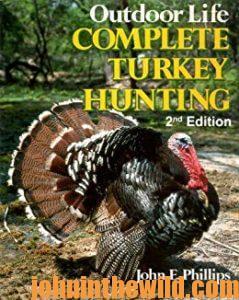 You’ll be able to hear 10% for free of the “Outdoor Life’s Complete Turkey” audible book at https://www.amazon.com/gp/product/B09Z5JHY42/ref=dbs_a_def_rwt_hsch_vapi_taud_p3_i4. On the right side of the page and below the offer for a free Audible trail, you can click on Buy the Audible Book. If you have any questions, please email me at john7185@gmail.com. You also can buy the Kindle version of the book at https://www.amazon.com/gp/product/B00IXXJWOQ/ref=dbs_a_def_rwt_hsch_vapi_taft_p1_i4
You’ll be able to hear 10% for free of the “Outdoor Life’s Complete Turkey” audible book at https://www.amazon.com/gp/product/B09Z5JHY42/ref=dbs_a_def_rwt_hsch_vapi_taud_p3_i4. On the right side of the page and below the offer for a free Audible trail, you can click on Buy the Audible Book. If you have any questions, please email me at john7185@gmail.com. You also can buy the Kindle version of the book at https://www.amazon.com/gp/product/B00IXXJWOQ/ref=dbs_a_def_rwt_hsch_vapi_taft_p1_i4
and the print version of the book at https://www.amazon.com/gp/product/1720096821/ref=dbs_a_def_rwt_hsch_vapi_taft_p7_i7. You may have to copy and paste these links into your browser.
Tomorrow: Fall Calls of Wild Turkeys


